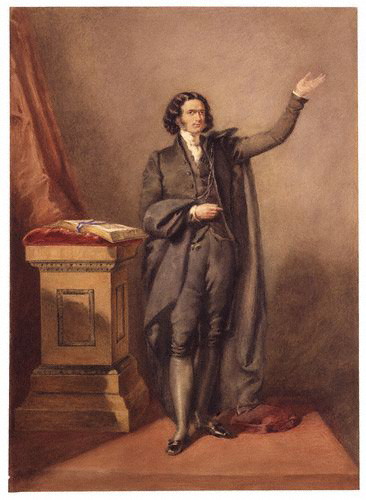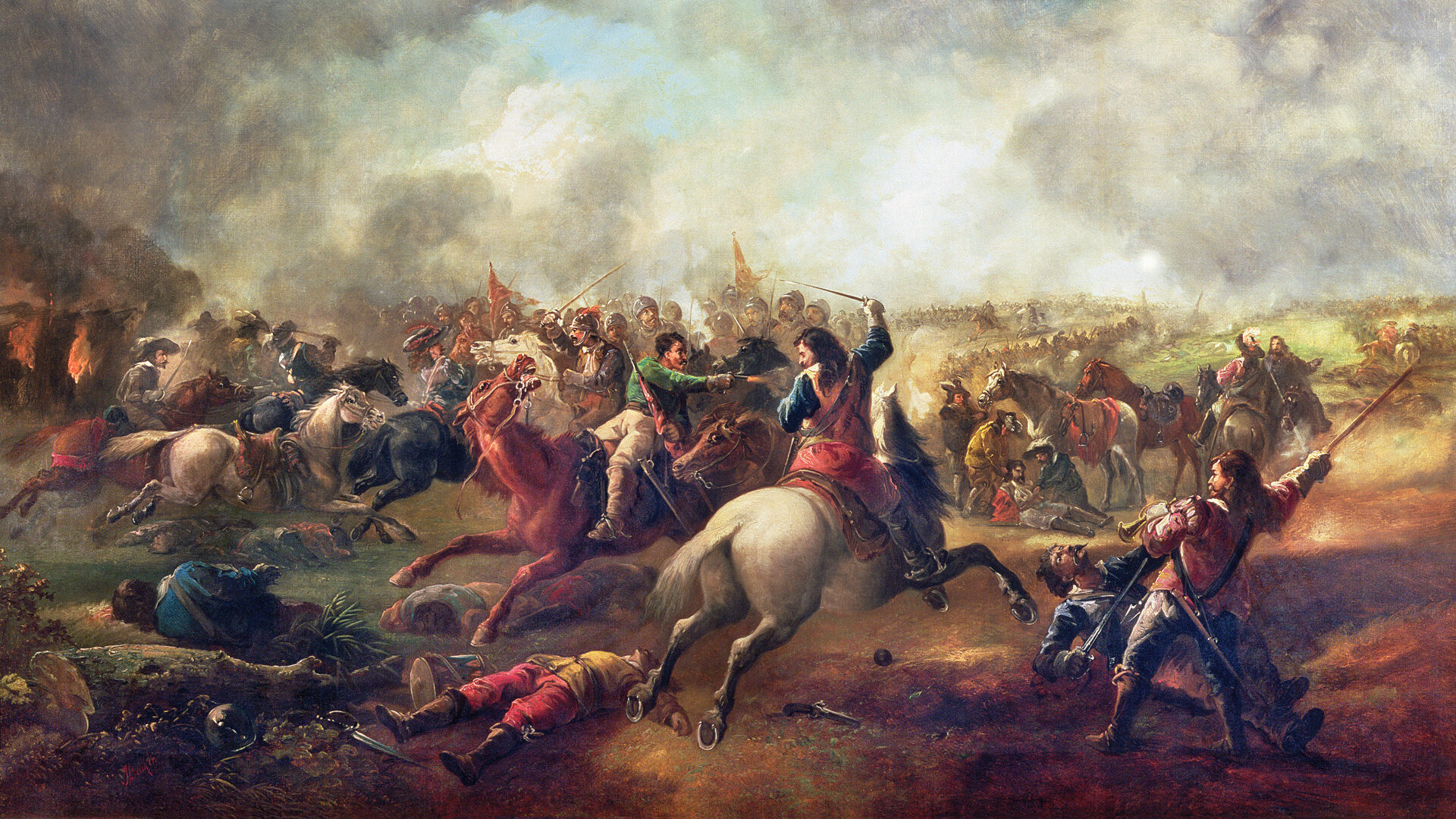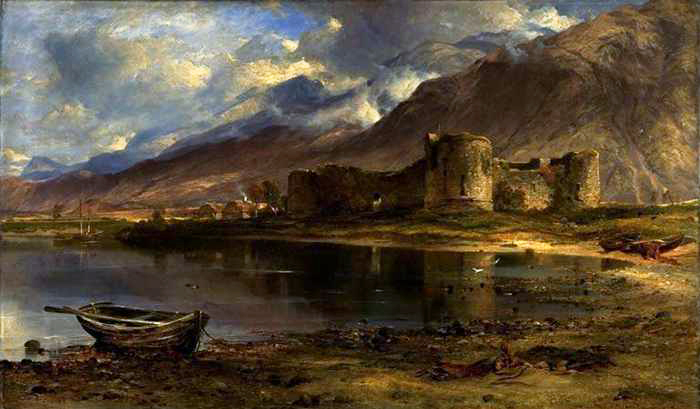|
Battle Of Annan Moor
The Battle of Annan Moor took place during the Scottish civil war, part of the intertwined Wars of the Three Kingdoms that took place in England, Ireland, and Scotland between 1639 and 1651. The Royalist army led by Lord Digby and Marmaduke Langdale had been trying to force a passage north to link up with the Marquis of Montrose. The battle took place on 20 and 21 October 1645 when the experienced cavalry commander Sir John Brown of Fordell and his newly raised Scots cavalry regiment defeated the Royalists army. The Royalists lost more than half of their 600 men as casualties or prisoners. The remainder of the Royalist were driven back into England. References * Brown, C, ''Scottish Battlefields,'' Gloucestershire, 2008. Sources * Furgol, E., A Regimental History of the Covenanting armies (John Donald, 1990). 1645 in Scotland Battles of the Scottish Civil War Conflicts in 1645 Battles involving Scotland Battle A battle is an occurrence of combat in warfare ... [...More Info...] [...Related Items...] OR: [Wikipedia] [Google] [Baidu] [Amazon] |
Scotland In The Wars Of The Three Kingdoms
Between 1639 and 1652, Kingdom of Scotland, Scotland was involved in the Wars of the Three Kingdoms, a series of conflicts which included the Bishops' Wars, the Irish Rebellion of 1641, the English Civil War, the Irish Confederate Wars and finally the Cromwellian conquest of Ireland, conquest of Ireland and the Anglo-Scottish war (1650–1652), subjugation of Scotland by the English New Model Army. Within Scotland, from 1644 to 1645 a Scottish civil war was fought between Scottish Cavalier, Royalists—supporters of Charles I of England, Charles I under James Graham, 1st Marquess of Montrose—and the Covenanters, who had controlled Scotland since 1639 and who were allied with Roundhead, English Parliamentarians. The Scottish Royalists, aided by Irish troops, had a rapid series of victories in 1644–45, but were eventually defeated by the Covenanters. The Covenanters then found themselves at odds with the English Parliament, so they crowned Charles II of England, Charles II ... [...More Info...] [...Related Items...] OR: [Wikipedia] [Google] [Baidu] [Amazon] |
Wars Of The Three Kingdoms
The Wars of the Three Kingdoms were a series of conflicts fought between 1639 and 1653 in the kingdoms of Kingdom of England, England, Kingdom of Scotland, Scotland and Kingdom of Ireland, Ireland, then separate entities in a personal union under Charles I of England, Charles I. They include the 1639 to 1640 Bishops' Wars, the First English Civil War, First and Second English Civil Wars, the Irish Confederate Wars, the Cromwellian conquest of Ireland and the Anglo-Scottish war (1650–1652), Anglo-Scottish War of 1650–1652. They resulted in the execution of Charles I, the abolition of monarchy, and founding of the Commonwealth of England, a unitary state which controlled the British Isles until the Stuart Restoration in 1660. Political and religious conflict between Charles I and his opponents dated to the early years of his reign. While the vast majority supported the institution of monarchy, they disagreed on who held ultimate authority. Cavalier, Royalists generally argued ... [...More Info...] [...Related Items...] OR: [Wikipedia] [Google] [Baidu] [Amazon] |
War Of The Three Kingdoms
The Wars of the Three Kingdoms were a series of conflicts fought between 1639 and 1653 in the kingdoms of England, Scotland and Ireland, then separate entities in a personal union under Charles I. They include the 1639 to 1640 Bishops' Wars, the First and Second English Civil Wars, the Irish Confederate Wars, the Cromwellian conquest of Ireland and the Anglo-Scottish War of 1650–1652. They resulted in the execution of Charles I, the abolition of monarchy, and founding of the Commonwealth of England, a unitary state which controlled the British Isles until the Stuart Restoration in 1660. Political and religious conflict between Charles I and his opponents dated to the early years of his reign. While the vast majority supported the institution of monarchy, they disagreed on who held ultimate authority. Royalists generally argued political and religious bodies were subordinate to the king, while most of their Parliamentarian opponents backed a limited form of constitutio ... [...More Info...] [...Related Items...] OR: [Wikipedia] [Google] [Baidu] [Amazon] |
Annan, Dumfries And Galloway
Annan ( ; ) is a town and former royal burgh in Dumfries and Galloway, south-west Scotland. Historically part of Dumfriesshire, its public buildings include Annan Academy, of which the writer Thomas Carlyle was a pupil, and a Georgian building now known as "Bridge House". Annan also features a Historic Resources Centre. In Port Street, some of the windows remain blocked up to avoid paying the window tax. Each year on the first Saturday in July, Annan celebrates the Royal Charter and the boundaries of the Royal Burgh are confirmed when a mounted cavalcade undertakes the Riding of the Marches. Entertainment includes a procession, sports, field displays and massed pipe bands. Annan's in America first migrated to New York and Virginia. Annandale Virginia is an early settlement which celebrates The Scottish Games annually. Geography Annan stands on the River Annan—from which it is named—nearly from its mouth, accessible to vessels of 60 tons as far as Annan Bridge ... [...More Info...] [...Related Items...] OR: [Wikipedia] [Google] [Baidu] [Amazon] |
Dumfries And Galloway
Dumfries and Galloway (; ) is one of the 32 unitary council areas of Scotland, located in the western part of the Southern Uplands. It is bordered by East Ayrshire, South Ayrshire, and South Lanarkshire to the north; Scottish Borders to the north-east; the English county of Cumbria, the Solway Firth, and the Irish Sea to the south, and the North Channel (Great Britain and Ireland), North Channel to the west. The administrative centre and largest settlement is the town of Dumfries. The second largest town is Stranraer, located to the west of Dumfries on the North Channel coast. Dumfries and Galloway corresponds to the counties of Scotland, historic shires of Dumfriesshire, Kirkcudbrightshire, and Wigtownshire, the last two of which are collectively known as Galloway. The three counties were combined in 1975 to form a single regions and districts of Scotland, region, with four districts within it. The districts were abolished in 1996, since when Dumfries and Galloway has been a ... [...More Info...] [...Related Items...] OR: [Wikipedia] [Google] [Baidu] [Amazon] |
Scottish Covenanters
Covenanters were members of a 17th-century Scottish religious and political movement, who supported a Presbyterian Church of Scotland and the primacy of its leaders in religious affairs. It originated in disputes with James VI and his son Charles I over church organisation and doctrine, but expanded into political conflict over the limits of royal authority. In 1638, thousands of Scots signed the National Covenant, pledging to resist changes in religious practice imposed by Charles. This led to the 1639 and 1640 Bishops' Wars, which ended with the Covenanters in control of the Scottish government. In response to the Irish Rebellion of 1641, Covenanter troops were sent to Ireland, and the 1643 Solemn League and Covenant brought them into the First English Civil War on the side of Parliament. As the Wars of the Three Kingdoms progressed, many Covenanters came to view English religious Independents like Oliver Cromwell as a greater threat than the Royalists, particularl ... [...More Info...] [...Related Items...] OR: [Wikipedia] [Google] [Baidu] [Amazon] |
Cavalier
The term ''Cavalier'' () was first used by Roundheads as a term of abuse for the wealthier royalist supporters of Charles I of England and his son Charles II of England, Charles II during the English Civil War, the Interregnum (England), Interregnum, and the Restoration (England), Restoration (1642 – ). It was later adopted by the Royalists themselves. Although it referred originally to political and social attitudes and behaviour, of which clothing was a very small part, it has subsequently become strongly identified with the fashionable clothing of the court at the time. Prince Rupert of the Rhine, Prince Rupert, commander of much of Charles I's cavalry, is often considered to be an archetypal Cavalier. Etymology ''Cavalier'' derives from the same Latin root as the Italian word , the French word , and the Spanish word , the Vulgar Latin word ''wikt:caballarius, caballarius'', meaning 'horseman'. Shakespeare used the word ''cavaleros'' to describe an overbearing swashbuckl ... [...More Info...] [...Related Items...] OR: [Wikipedia] [Google] [Baidu] [Amazon] |
George Digby, 2nd Earl Of Bristol
George Digby, 2nd Earl of Bristol (5 November 161220 March 1677) was an English politician and peer who sat in the House of Commons from 1640 until 1641, when he was raised to the House of Lords by a writ of acceleration. He supported the Royalists during the English Civil War, but his ambition and instability of character caused serious problems to himself and both Kings he served. Early life Digby was baptized in Madrid, the eldest known son of John Digby, 1st Earl of Bristol, who for many years was the English Ambassador to Spain, and his wife Beatrice Walcott.Ronald Hutton, ‘Digby, George, second earl of Bristol (1612–1677)’, ''Oxford Dictionary of National Biography'', Oxford University Press, 2004; online edn, May 2009. He is presumed to have been born there shortly before. At the age of twelve, he appeared at the bar of the House of Commons and pleaded for his father who was then imprisoned in the Tower of London. His youth, graceful person and well-delivered spe ... [...More Info...] [...Related Items...] OR: [Wikipedia] [Google] [Baidu] [Amazon] |
Marmaduke Langdale
Marmaduke Langdale, 1st Baron Langdale ( – 5 August 1661) was an English landowner and soldier who fought with the Royalists during the Wars of the Three Kingdoms. An only child who inherited large estates, he served in the 1620 to 1622 Palatinate campaign before returning home; during the period of Personal Rule by Charles I from 1629 to 1640, he opposed both the Forced Loan and Ship Money. Nevertheless, when the civil war began in 1642 he joined the Royalist Northern Army, although with little enthusiasm. He proved a talented commander of cavalry; after defeat at Marston Moor in 1644, he formed the survivors into the Northern Horse, which quickly gained a reputation for ill-discipline. After Royalist defeat in the Second English Civil War in 1648, he went into exile and served briefly in the Venetian army before forced to retire by sickness. In 1653, he converted to Catholicism and later resided in Lamspringe Abbey, Westphalia. Created Baron Langdale in 1658 by Charle ... [...More Info...] [...Related Items...] OR: [Wikipedia] [Google] [Baidu] [Amazon] |
1645 In Scotland
Events January–March * January 3 – The Long Parliament adopts the ''Directory for Public Worship'' in England, Wales, Ireland and Scotland, replacing the Book of Common Prayer (1559). Holy Days (other than Sundays) are not to be observed. * January 10 – Archbishop of Canterbury William Laud is executed for treason on Tower Hill, London. * January 14 – English Civil War: Thomas Fairfax is appointed Commander-in-Chief of the Parliamentarians. * January 29 – English Civil War: Armistice talks open at Uxbridge. * February 2 – Battle of Inverlochy: The Scottish Covenanters are defeated by Montrose. * February 15 – English Civil War: The New Model Army is officially founded. * February 28 – English Civil War: The Uxbridge armistice talks fail. * March 4 – English Civil War: Prince Rupert leaves Oxford for Bristol. * March 5 – Thirty Years' War – Battle of Jankau: The armies of Sweden decisively defeat the fo ... [...More Info...] [...Related Items...] OR: [Wikipedia] [Google] [Baidu] [Amazon] |
Battles Of The Scottish Civil War
A battle is an occurrence of combat in warfare between opposing military units of any number or size. A war usually consists of multiple battles. In general, a battle is a military engagement that is well defined in duration, area, and force commitment. An engagement with only limited commitment between the forces and without decisive results is sometimes called a skirmish. The word "battle" can also be used infrequently to refer to an entire operational campaign, although this usage greatly diverges from its conventional or customary meaning. Generally, the word "battle" is used for such campaigns if referring to a protracted combat encounter in which either one or both of the combatants had the same methods, resources, and strategic objectives throughout the encounter. Some prominent examples of this would be the Battle of the Atlantic, Battle of Britain, and the Battle of France, all in World War II. Wars and military campaigns are guided by military strategy, whereas batt ... [...More Info...] [...Related Items...] OR: [Wikipedia] [Google] [Baidu] [Amazon] |
Conflicts In 1645
Conflict may refer to: Social sciences * Conflict (process), the general pattern of groups dealing with disparate ideas * Conflict continuum from cooperation (low intensity), to contest, to higher intensity (violence and war) * Conflict of interest, involvement in multiple interests which could possibly corrupt the motivation or decision-making * Cultural conflict, a type of conflict that occurs when different cultural values and beliefs clash * Ethnic conflict, a conflict between two or more contending ethnic groups * Group conflict, conflict between groups * Intragroup conflict, conflict within groups * Organizational conflict, discord caused by opposition of needs, values, and interests between people working together * Role conflict, incompatible demands placed upon a person such that compliance with both would be difficult * Social conflict, the struggle for agency or power in something * Work–family conflict, incompatible demands between the work and family roles of ... [...More Info...] [...Related Items...] OR: [Wikipedia] [Google] [Baidu] [Amazon] |








